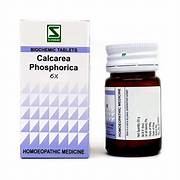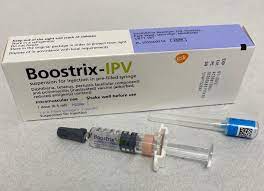WHAT IS CALCAREA PHOSPHORICA?
Calcarea phosphorica (Calc. p.) is a biochemic tissue salt and a deep-acting homeopathic remedy derived from calcium phosphate, a major component of bones, teeth, blood cells, and connective tissues.
It’s primarily indicated in:
- Growing children with developmental delays
- Bone and dental disorders
- Anemic, emaciated, weak constitutions
- Chronic catarrhal and glandular conditions
- Rheumatic complaints aggravated by cold
It’s often called the “remedy of growth and nutrition” — especially when growth is uneven, delayed, or defective.
II. KEYNOTE INDICATIONS IN CHILDREN
A. Growth & Developmental Delays
“During the growing period many children need this remedy. If the head bones are slow in forming, or do not keep pace with the growth of the child…”
- Delayed closure of fontanelles (soft spots on baby’s head)
- Slow to walk, talk, or learn — mentally and physically sluggish
- Legs too weak to support body — may walk late or with difficulty
- Loss of flesh despite eating — emaciation with poor assimilation
- Flabby, shrunken, wasted appearance — not from starvation, but faulty metabolism
Think of the child who is “behind” in everything — late teething, late walking, late talking, poor memory, easily tired.
B. Bone & Skeletal Problems
“Non-union of fractured bones, swollen condyles… Diseases of bone… Rachitis (rickets)…”
- Rickets — bowed legs, open fontanelles, bead-like ribs (rachitic rosary), delayed milestones
- Poor bone healing — fractures that won’t knit
- Caries of bones (esp. heel bone — os calcis)
- Curvature of spine (scoliosis, kyphosis)
- Growing pains — especially at night, in long bones (tibia, femur)
Calc. p. is the remedy for “growing pains” in tall, thin, fast-growing children who ache in limbs at night.
III. MENTAL & EMOTIONAL PICTURE
“Tired and weak brain… Feeble memory… Dreads mental exertion… Suffering in head from mental effort…
- Mental fatigue — brain feels exhausted after studying or thinking
- School children come home with headaches — worse from schoolwork
- Sluggish, slow to grasp — “can’t keep up” mentally
- Fretful, irritable — especially when forced to exert mentally
- Fear, grief, bad news trigger physical symptoms — ailments from emotional shocks
- Desire for solitude — avoids social exertion, wants to be alone with thoughts
- Discontented, restless — moves from place to place, never satisfied
IV. GENERAL MODALITIES (What makes it better or worse?)
This is CRUCIAL for prescribing:
- WORSE from COLD — cold air, cold weather, cold drinks, getting chilled
- WORSE from MOTION or EXERTION — physical or mental
- BETTER from REST — lying still, keeping quiet
- BETTER from WARMTH — heat ameliorates pains (like Mag. phos., but different sphere)
- Worse at NIGHT — pains, cough, restlessness, sweating
- Sensitive to JAR — head, body — can’t tolerate jarring movements
V. THERMAL & PHYSICAL CHARACTERISTICS
- Chilly patient — always cold, especially extremities (legs cold to knees)
- Copious night sweats — often on chest, head
- Dry heat in evening — followed by sweating at night
- Shaking chill spreading downward — unusual and characteristic
- Anemia — pale, waxy, dirty-looking skin
- Easy ulceration — slow-healing sores, fistulas, gumboils, anal fissures
VI. HEAD & NEUROLOGICAL SYMPTOMS
“Head sensitive to jar, pressure, hat… wants head washed in cold water…”
- Dull, heavy, throbbing headaches — especially in school children after mental work
- Worse from cold air, walking, exertion, night
- Better from cold applications (unusual — most headaches better from warmth!)
- Vertigo — on rising, in cold wind, from exertion
- Epileptic spasms, convulsions in children — give BETWEEN attacks for prevention
- Strabismus (crossed eyes) after brain congestion — with diarrhea and emaciation
VII. EAR, NOSE, THROAT (ENT)
“Rheumatic tearing in ears with cold weather… Polypi in nose… Chronic catarrh…”
- Earaches — deep, aching, worse in cold weather
- Enlarged, painful parotid glands (mumps-like)
- Nose:
- Polypi (nasal, rectal, uterine!) — Calc. p. is a polypus remedy
- Coryza: runny in cold room, blocked in warm room — paradoxical!
- Epistaxis (nosebleeds)
- Throat:
- Enlarged tonsils — every cold “settles in throat”
- Dry at night, lots of mucus during day
- Children: chronic tonsillitis, adenoids
VIII. MOUTH, TEETH, DIGESTION
“Teeth late coming or decay soon… Foul taste… Craves salt bacon…”
- Dentition troubles — teeth erupt late, decay easily, sensitive to touch/pressure
- Tongue: coated, swollen, numb, stiff in morning
- Appetite: strong — craves salty, smoked meats (bacon, ham)
- Infants: want to nurse constantly — but still lose weight
- Stomach upset from:
- Cold drinks, ice cream, fruits → pain, diarrhea
- Eating → pain, sour eructations, nausea
- Liver complaints — sore, stitching pains after eating or motion
- Abdomen: bloated, flabby, gurgling (feels “something alive” from gas)
- Diarrhea:
- Green mucus, hot watery, or white mushy stools
- Offensive gas
- From fruit, cold drinks, or emotional upset (vexation)
“Tabes mesenterica” — historic term for TB-related wasting with diarrhea — Calc. p. is a key remedy.
IX. RECTUM & ANUS
“Protruding piles so painful… Boils, abscesses… Fissured anus…”
- Hemorrhoids — extremely painful, can’t sit or walk, better from heat
- Bleeding, itching, burning, yellow pus discharge
- Anal fissures — stitching, burning pains
- Fistulas, abscesses — especially in tubercular or anemic subjects
- Constipation — hard, difficult stool
X. URINARY & SEXUAL SYSTEMS
“Weak bladder… Catarrh of bladder… Cured diabetes mellitus…”
- Frequent, copious urination
- Pain in bladder neck — before and after urinating
- Kidney pains — violent, stitching
- Gonorrhea — chronic, with gleety discharge, sharp urethral pains, worse in cold
- Gonorrheal rheumatism — joint pains after gonorrhea, worse in cold
In Women:
“No better friend than Calc. p.” — especially at puberty and menses
- Delayed or painful puberty — slow to mature
- Menstrual cramps — violent, start hours before flow, cry out in pain, relieved once flow starts
- Dark clots, membranes in menses
- Leucorrhea — like raw egg white, day and night
- Prolapsed uterus — during stool or urination
- Uterine polypi
- Breastfeeding issues — child refuses milk; next child stronger if mother treated
XI. RESPIRATORY SYSTEM
“Dry hacking cough… Tubercular laryngitis… Suffocation on stairs…”
- Hoarseness, must clear mucus before speaking/singing
- Cough: dry, hacking, worse cold/damp weather, night
- Expectoration: yellow, difficult, rattling (like Causticum)
- Phthisis (TB) — emaciation, night sweats, blood-spitting
- Palpitations — with trembling, worse from exertion
- Chest sore to touch — emaciated chest
XII. BACK & EXTREMITIES
“Back pains worse cold, stormy weather… Rheumatic limbs… Cold to knees…”
- Back: stiff, sore, worse morning, lifting, drafts
- Spine: curvature, tearing pains, sacral pain during menses
- Limbs:
- Rheumatic, tearing, shooting pains — worse cold, motion
- Better rest, heat
- Trembling, stiffness after rest
- Gouty fingers/toes — painful in cold
- Ulcerative pains at nail roots
- Worst pains in lower limbs — because they’re always cold!
- Sharp tendon pains, boring knee pains, cramps in calves
- Ulcers on legs — chronic, non-healing, no granulation
XIII. SLEEP & DREAMS
- Sleepy during day and evening — but…
- Sleepless after going to bed — until midnight or later
- Very sleepy in morning — hard to wake up
- Vivid, frightful dreams — awaken with a start
- Children cry out in sleep — night terrors, growing pains waking them
XIV. COMPARATIVE ANALYSIS (Similar Remedies)
XV. CLINICAL APPLICATIONS — WHEN TO THINK OF CALC. P.
- The “growing pain” child — tall, thin, aches in legs at night, tired, anemic.
- Delayed development — late walking, talking, teething, learning.
- Poor bone healing — fractures, rickets, spinal curvature.
- Chronic catarrh or tonsillitis — every cold goes to throat/nose.
- Anemic girls at puberty — painful, irregular menses, fatigue.
- Tubercular diathesis — night sweats, emaciation, cough, diarrhea.
- Polypi — nose, rectum, uterus.
- Chronic anal fissures/fistulas — in weak, chilly patients.
- Students with headaches — worse from mental exertion, better cold water.
- Gonorrheal rheumatism — joint pains worse in cold weather.
XVI. DOSAGE & POTENCY TIPS (for students)
- Low potencies (6X, 12X, 6C) — for nutritional, tissue-level support (biochemic use)
- Medium potencies (30C) — for acute flare-ups, growing pains, headaches
- High potencies (200C, 1M) — for deep constitutional cases, developmental delays, chronic disease
XVII. SUMMARY MNEMONICS FOR STUDENTS
“Calc. p. = Cold, Growing, Delayed, Painful, Better Rest & Heat”
- Chilly to core (esp. legs)
- Anemic, emaciated, flabby
- Late development (walk, talk, teeth)
- Complaints from cold, exertion, grief
- Pains better rest, heat; worse motion, cold
FINAL NOTE TO STUDENTS
Calcarea phosphorica is not just a “bone remedy.” It’s a constitutional remedy for the child (or adult) whose growth — physical, mental, or emotional — is out of sync. They are trying to grow, but their body can’t keep up. They are tired, chilly, sensitive, and worse from any kind of exertion — mental or physical.
It’s a remedy of potential unfulfilled — and when well-prescribed, it helps the child (or adult) catch up, strengthen, and thrive.
Master this remedy — it will serve you in pediatric, orthopedic, gynecological, and chronic constitutional cases throughout your practice.





